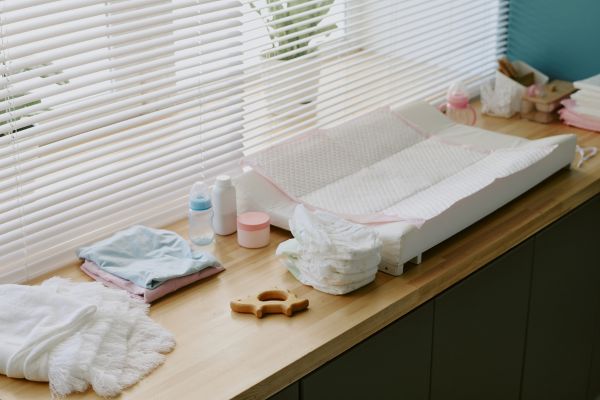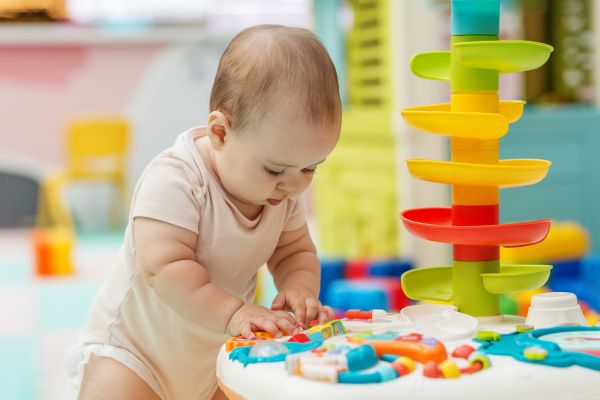Watching your little one grow is kind of like binge-watching the most exciting show of your life. Each month brings new surprises, tiny victories, and sometimes even a few challenges that leave you wondering, “Wait… are they supposed to be doing that already?” That’s where this baby monthly milestone guide comes in. It’s not a rigid checklist or a race to the finish line—it’s more of a friendly roadmap so you know what to expect as your baby journeys from squishy newborn to curious one-year-old.
The thing is, every baby moves at their own pace. Some roll early, some talk late, and that’s totally okay. Think of this as a guide to celebrate progress, not compare. So, let’s dive into this month-by-month adventure together.
Month 1: Discovering the World
In the first month, your baby is adjusting to life outside the womb. Most of their milestones are about survival and bonding. They’ll focus on your face, respond to familiar voices, and startle at loud sounds. Honestly, it might not look like much at first, but these tiny reactions are building blocks for everything else.
This stage is all about skin-to-skin cuddles, eye contact, and establishing feeding routines. Remember, they’re learning about you just as much as you’re learning about them.
Month 2: Smiles and Sounds
Around two months, your baby starts to recognize that life isn’t just about eating and sleeping. This is when that magical “first social smile” happens—the one that melts your heart instantly. You may also notice more cooing and gurgling sounds as they experiment with their voice.
Tummy time becomes super important now because it helps strengthen their neck and shoulder muscles. They might even start to hold their head up for a few seconds. It’s wobbly and adorable all at once.
Month 3: Growing Stronger
By the third month, your little one is more alert and interactive. They’ll follow objects with their eyes and may even reach for toys. Hand discovery kicks in—they’ll spend a lot of time staring at or trying to stuff their fists into their mouths.
This is also when their cries start sounding different. You’ll soon be able to tell the “I’m hungry” cry from the “I just want attention” cry. You know, baby language 101.
Month 4: Rolling and Giggles
Four months is a fun stage because babies often roll from tummy to back. It’s their first big move toward independence. Expect lots of giggles too—because laughter really is the best milestone.
They’ll also start grabbing toys with more intention, which means dangling rattles and colorful teethers will be a hit. Don’t be surprised if everything goes straight into their mouth. It’s their way of exploring the world.
Month 5: More Movement
At five months, babies usually start rolling both ways. They’re stronger, more coordinated, and maybe even trying to sit with support. Their hand-eye coordination improves, so they’ll reach, grab, and pull everything closer—yes, including your hair.
This is also the age when you might notice more squeals and babbling. They’re testing out their vocal cords like a tiny opera singer in training.
Month 6: Sitting Up and Solid Foods
Half a year already—can you believe it? By six months, many babies can sit with little or no support. They also show curiosity about what you’re eating, which is why pediatricians often recommend introducing solids now.
Babbling becomes more varied, with sounds that might almost resemble words. And those first teeth? They could start making an appearance, so get ready for drool and teething toys galore.
Month 7: Exploring More
At seven months, babies are all about exploring. They can often sit without help and may start scooting or trying to crawl. This newfound mobility opens a whole new world for them—and a whole new level of baby-proofing for you.
They’ll also recognize their name and may turn when you call them. Peek-a-boo becomes a favorite game because they’re beginning to understand object permanence (that things exist even when they can’t see them).
Month 8: Crawling and Clapping
Eight months often brings the classic crawling stage. Some babies army crawl, some do the hands-and-knees thing, and some skip crawling altogether and go straight to standing. Whatever the method, they’re on the move.
This is also the time for clapping and mimicking. If you wave, they’ll wave. If you clap, they’ll clap. It’s like having a tiny cheerleader following you around.
Month 9: Standing with Support
By nine months, your baby may pull themselves up to stand while holding onto furniture. Cruising along the couch isn’t far behind. They’ll also start using their thumb and finger in a “pincer grasp” to pick up small objects, so keep choking hazards out of reach.
Their babbles get more complex, sometimes sounding like real conversation. It’s hilarious, like they’re telling you a whole story you just don’t understand yet.
Month 10: Little Explorer
At ten months, mobility takes center stage. Some babies crawl at lightning speed, while others spend most of their time practicing standing. You’ll see lots of curiosity—opening drawers, banging on pots, and inspecting everything within reach.
They’re also learning cause and effect, so they’ll drop toys just to watch you pick them up. Over and over. And over. Let’s be real, it’s a patience test for you but a science experiment for them.
Month 11: Cruising and Copying
Eleven months is a time of imitation. Your baby will copy your gestures, like brushing their hair with a toy or pretending to talk on the phone. Cruising along furniture is almost constant, and a few brave steps might even happen.
Their personality shines through now—they know what they like and don’t like, and they’ll let you know loud and clear.
Month 12: First Birthday and First Steps
And here it is—the big one. By their first birthday, many babies take their first independent steps. Some are walking confidently, while others are still holding back. Both are perfectly normal.
Their language skills grow rapidly too. You might hear words like “mama” or “dada,” and they’ll understand simple instructions. They’re also more social, waving goodbye or clapping when they’re excited.
This is the milestone where you realize just how far your baby has come in twelve short months. From tiny newborn reflexes to walking, babbling, and exploring—it’s a journey worth celebrating.
Final Thoughts on the Baby Monthly Milestone Guide
Parenting during the first year is a whirlwind of sleepless nights, heart-melting smiles, and unforgettable “firsts.” The baby monthly milestone guide isn’t about hitting exact dates—it’s about enjoying the ride and recognizing the incredible progress your little one makes in their own time.
So when you find yourself worrying about whether your baby is “on track,” take a breath. Look at how much they’ve grown since day one. Every coo, roll, giggle, and step is part of a unique story that only your baby can write. And you? You’re right there cheering them on every step of the way.



